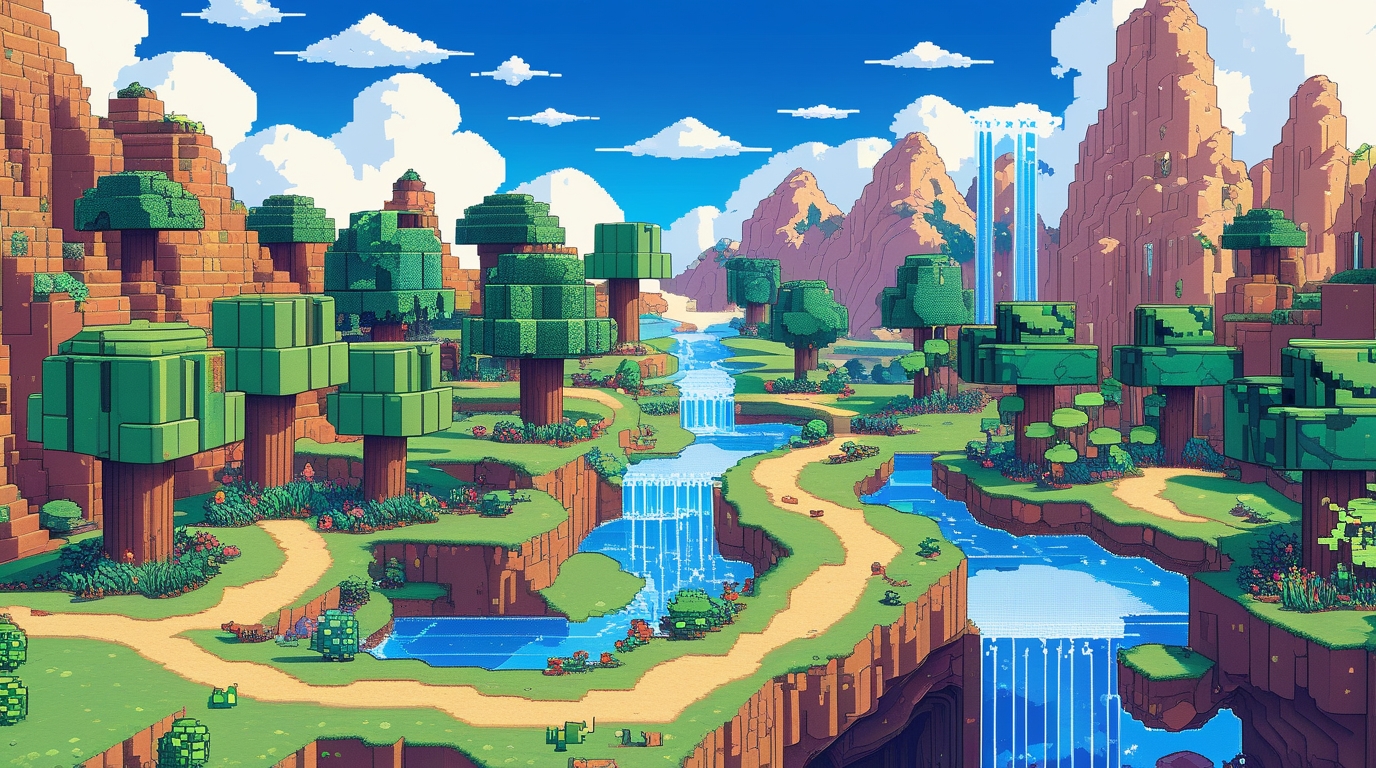
The majority of people instantly recall the 8-bit and 16-bit gaming period when they hear the term “pixel art.” Nevertheless, pixel art is still popular decades after the NES and SNES established its aesthetic. Pixel art is not just a nostalgic nod, but a deliberate artistic choice in modern game development.
Let’s discover how game developers can employ pixel art efficiently in their creations, and why it is still relevant in 2025.
Why Pixel Art Is Still Popular
1. Nostalgia with a Modern Twist
Pixel art immediately evokes strong feelings in gamers who grew up during the console heyday. However, its enduring popularity cannot be explained by nostalgia alone. By combining complex lighting, animation, and narrative with pixelated graphics, modern developers are creating a fresh new experience.
2. Clarity and simplicity
Pixel art strips down visuals to their essence. Because of its instantly recognizable characters, enemies, and environments, it’s ideal for casual and indie games where accessibility is important.
3. Accessibility for developers
Compared to highly detailed 3D models, pixel art can be more cost-effective to create. For smaller studios and independent teams who want to build visually appealing games without AAA expenditures, this makes it tempting.
4. Timeless aesthetic
Trends in 3D graphics come and go, but pixel art has a stylized charm that never gets old. A good pixel game now will still look as excellent in twenty years.
5. Community Appeal
From modders to fan artists, pixel art has an active community culture. This accessible style enables fans to reproduce, remix, and interact with game content easily.
How to Effectively Use Pixel Art in Modern Games
1. Define the Resolution and Scale Early
Consistency is everything in pixel art. To avoid mismatched assets, pick a fixed resolution (such as 16×16 or 32×32) and stick with it during development.
2. Combine Retro Style with Modern Tech
Pixel art doesn’t mean old-fashioned. To create a novel, hybrid aesthetic, many contemporary games combine pixel visuals with dynamic lighting, particle effects, or fluid camera movement.
3. Prioritize readability
Every pixel counts. Particularly on tiny mobile screens, make sure your items, adversaries, and characters are easily distinguished from the background.
4. Use animation wisely
Pixel animation doesn’t need hundreds of frames to feel alive. Use expressive key movements to give your figures individuality, such as bouncing, blinking, or attacking positions.
5. Match your art style to your gameplay
Pixel graphics are especially well-suited for:
- Casual mobile games (crisp, readable graphics)
- Roguelikes and RPGs (rich retro traditions)
- Puzzle games and platformers (games that require precision)
6. Avoid overcomplication
Pixel graphics’ simplicity is what makes them so beautiful. Excessive details might break the aesthetic and give the images a cluttered appearance.
Success Stories in Pixel Art
Stardew Valley
Pixel graphics make farming games more enjoyable.
Dead Cells
It’s a vibrant roguelike that blends modern effects with stunning pixel animation.
Octopath Traveler
Introduced the “HD-2D” style, which blends pixelated characters with 3D lighting and depth.
These illustrations demonstrate that pixel art is not only alive and well, but also evolving.
Final Thoughts
Pixel art is still a potent technique in contemporary game design because it blends accessibility, nostalgia, and timeless aesthetics. It offers a visually appealing and reachable solution that players can instantly identify with, especially for casual and mobile games.
Pixel art is still one of the best ways to add personality and charm to a game. At Melior Games, we help companies choose the perfect visual style that matches their vision.




